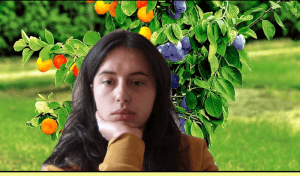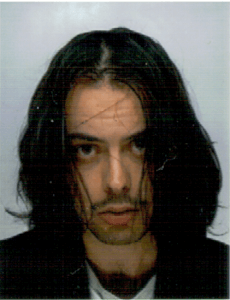The objective of this project is to investigate the transformation of the signal-exchange process of a tree sample to which the ancient technique of grafting will be applied. Grafting is a horticultural practice with the goal of tissue connection of different plant types. What is probably most fascinating about the praxis of grafting is the occurrence of a unique symbiotic relationship, a genetic chimera. The grafting union’s communication is established through a vascular connection, cell-to-cell communication and exchanges of genetic material. Since some trees are not self-fertile the implantation of two different sexes of one type of fruit leads to the organism’s autonomy; a bisexual organism is created.
Since the intersectional use of creative and scientific technology allows us to redefine and enhance the borders of our experience and reposition our perspective to the phenomena of life itself, we propose a transdisciplinary display format in order to make the collected data multi-sensually perceivable. As research objects for this work, fruit trees with two and three varieties of fruits each will be grafted. They will be prepared in spring and planted in the garden of the University of Applied Arts at the end of summer, so that the object of research will also find practical application as an aesthetical intervention on the square lawn. The electrophysiological signals of our research object will be recorded through electrodes connected to it. We will programme a creative software that enables us to translate the generated data into multimedial parameters in a synaesthetic fashion and present the output in a digital-organic installation. As sonification is already explored in many scientific and artistic contexts, we use this technique to express changes in the tree’s electrophysiological processes: we aim to document potential long- term variations in the tree’s electrophysiology initiated by the application of horticultural grafting, as well as to examine the hypothesis that external physical contact of humans induces electrophysiological responses of the trees.
Dealing with the topic of the “observer” as a non excludable factor whose presence cannot remain without influence on the study of natural systems, we intend to regard the observer as a performative factor of interest for the artistic research. Is it possible to reveal the observer not as a disruptive factor but as another type of influence? For this reason, it is important to re-evaluate the moment of invasion from a philosophical perspective. Referring to J. L. Nancy's idea of the corpus, the perception of the body is only made possible by the experience of one's limits through the touch of the outside. Independently of the organism having a neuronal system or not, the experience of the outside marks the organism’s borders, the physis. A disrupted state is a state of liminality which can lead to a different self-perception. The viewer is involved through stimulation of the tree’s action potential while perceiving the process through the recomposition of the electric signal into an acoustic and visual language.
Back







